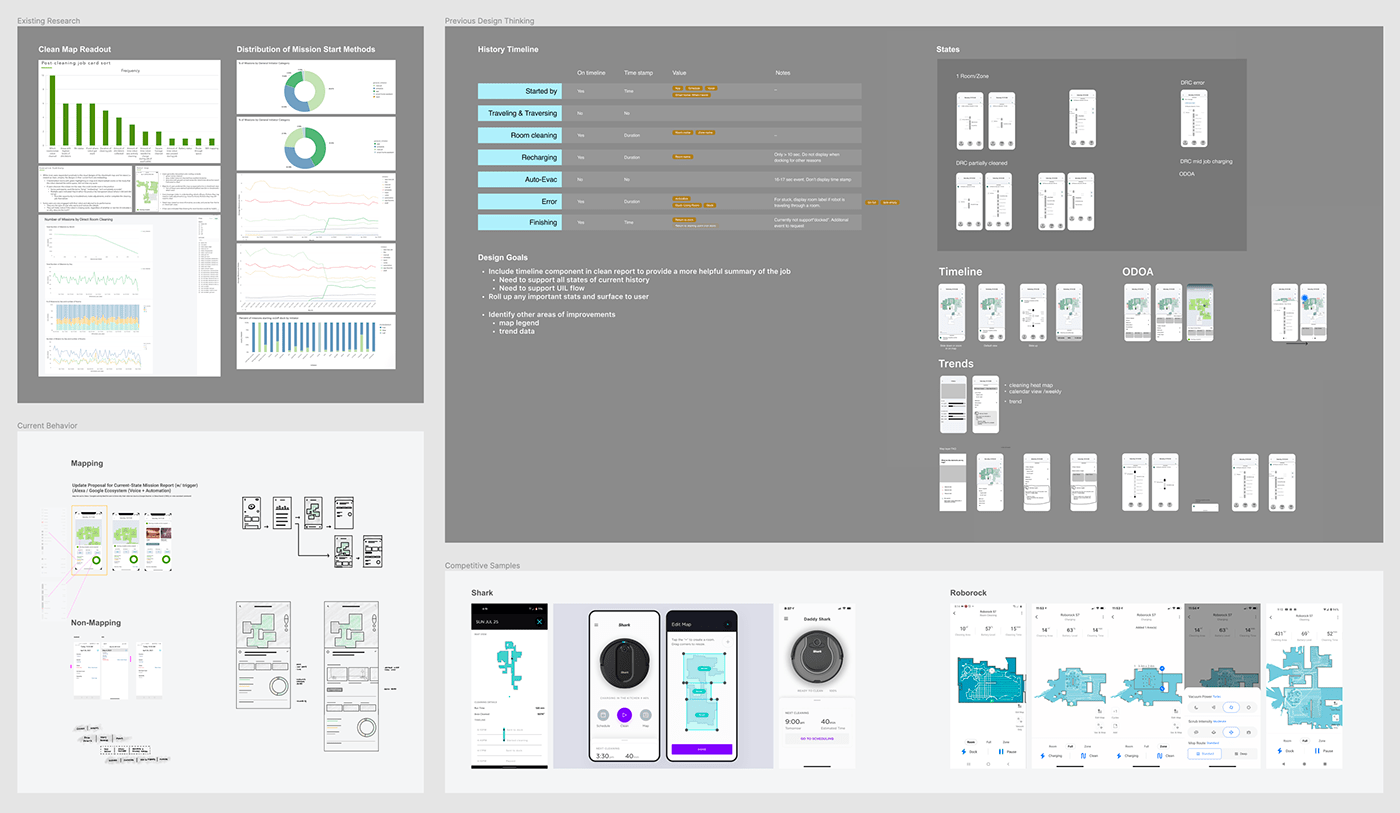iRobot
iRobot is the maker of Roomba, the most popular robotic vacuum in the world. I joined the company in March 2022 as Principal UX Designer to help evolve the iOS and Android apps customers use to control their Roomba vacuums and other products.

While I was still settling in on the team, I was tasked with auditing our accessibility support in both apps. I was privileged to work with iRobot‘s research team and Perkins School for the Blind to find and fix nearly 200 software issues across both platforms. We went way beyond color contrast. In the process, I became an adept user of VoiceOver (on iOS) and TalkBack (on Android) and learned a ton about designing for accessibility.

Our small team found a range of accessibility issues, formed a plan for how to address them, documented the problems and solutions in our tracking system, guided work to completion amongst five separate development programs, and helped define a practice for identifying and documenting accessibility requirements for projects going forward.

Next, I was tasked with evaluating how we report cleaning outcomes in the app for individual jobs and over time. Mostly using research which had been done previously, I prioritized the information that our customers wanted to see for active jobs, recent jobs, and historical jobs.


I prototyped and tested a variety of layouts with existing Roomba owners, and I worked with engineers to find the simplest and most cost-effective way to achieve our goals.


Next, my project focus shifted to the primary robot controls in the app used for starting, controlling, and stopping cleaning jobs. I helped the team plan detailed component behaviors for start, pause, skip, go home, and other functions.

Another project related to how the app experience would support a new hardware product. iRobot plans to release an improved dock to pair with the latest vacuum-and-mop product, the Roomba Combo. We evaluated the cleaning lifecycle to determine when and how to deliver signals related to dock or vacuum behaviors in the app experience.

Working with a design partner, we prototyped and tested several variations and found a series of layouts that introduced the new hardware into the UI in a way that our customers found simple, obvious, and exciting.

The last project I’ll highlight was an evaluation of a long-term product vision. Based on a few months of user research, the product team asserted that iRobot should transform the app experience from being device centric toward being more home and space centric. So, customers would see an app oriented around their home and its layout instead of one that centered more around the devices they own.

To test this direction, we modeled both the existing information architecture and the proposed information architecture. Working with product managers from every program in the organization, we shaped the IA proposal until we had something that was complete enough to test.

Then working with the research team at iRobot, we tested the existing information architecture against the new information architecture in just its tree form. We used Optimal Workshop and a research method called "tree jack testing."
The results proved the direction was promising, illuminated weak points in the proposal, and informed our subsequent ideation and testing.



